Most Important Football Positions: A Comprehensive Guide
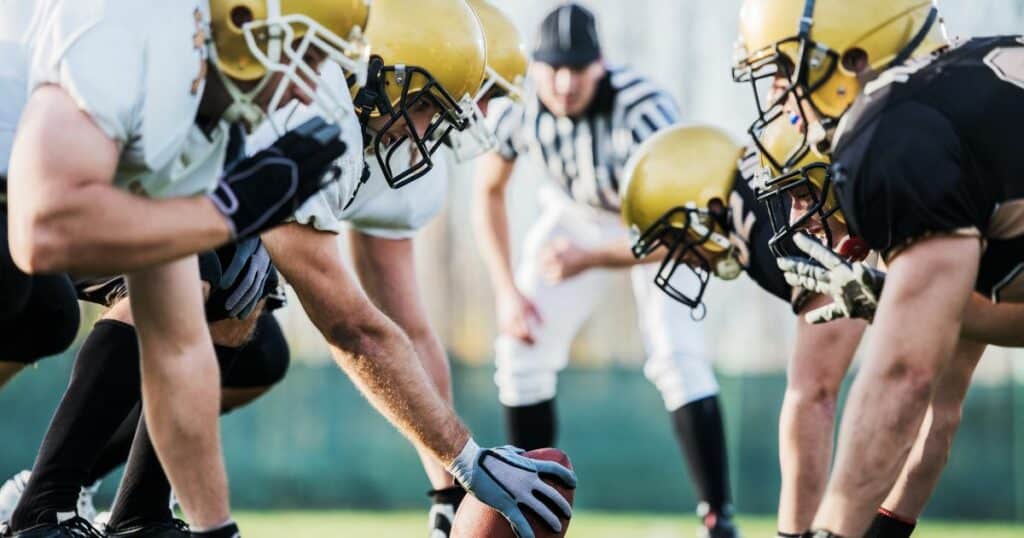
The Basics of Football Positions
Football is a team game played on a rectangular field with two end zones. Each team has 11 players on the field at a time and is divided into three distinct units: offense, defense, and special teams. The positions in football can be broken down into these three units.
Offense Positions
The offense’s primary goal is to score touchdowns by advancing the ball down the field.
The following table shows the most important positions on offense in football, ranked by importance:
| Rank | Position | Description |
|---|---|---|
| 1 | Quarterback | The leader of the offense who throws passes and makes decisions on the field. |
| 2 | Left Tackle | Protects the quarterback’s blind side from pass rushers. |
| 3 | Center | Snaps the ball to the quarterback and blocks defenders. |
| 4 | Running Back | Carries the ball and catches passes out of the backfield. |
| 5 | Wide Receiver | Runs routes and catches passes from the quarterback. |
| 6 | Tight End | Blocks defenders and catches passes. |
| 7 | Right Tackle | Blocks defenders on the quarterback’s right side. |
Defense Positions
The defense’s primary goal is to prevent the offense from scoring by tackling ball carriers, intercepting passes, and forcing turnovers.
The following table shows the most important positions on defense in football, ranked by importance:
| Rank | Position | Description |
|---|---|---|
| 1 | Middle Linebacker | The leader of the defense who calls plays and tackles ball carriers. |
| 2 | Safety | Defends against deep passes and tackles ball carriers. |
| 3 | Cornerback | Defends against wide receivers and intercepts passes. |
| 4 | Defensive End | Rushes the quarterback and tackles ball carriers. |
| 5 | Outside Linebacker | Rushes the quarterback and tackles ball carriers. |
Special Teams Positions
Special teams are responsible for kicking field goals, punting, and returning kicks and punts.
The following table shows the most important positions on special teams in football, ranked by importance:
| Rank | Position | Description |
|---|---|---|
| 1 | Kicker | Kicks field goals and extra points. |
| 2 | Punter | Kicks the ball to the opposing team on fourth down. |
| 3 | Long Snapper | Snaps the ball to the punter or kicker on special teams. |
| 4 | Kick Returner | Returns kickoffs for the offense. |
| 5 | Punt Returner | Returns punts for the offense. |
Understanding the basics of football positions is crucial for anyone who wants to follow or play the game.
The positions on offense, defense, and special teams all play important roles in the outcome of a football game.
Offensive Positions
When it comes to football, the offensive positions are responsible for moving the ball down the field and scoring points.
Each position has its own unique set of responsibilities and requires specific skills. Here are the most important offensive positions:
Quarterback

The quarterback is the most important offensive player on the field. They are responsible for calling plays, reading the defense, and throwing the ball.
A good quarterback must have excellent decision-making skills, accuracy, and arm strength.
They are the leader of the offense and must be able to make quick decisions under pressure.
Running Backs
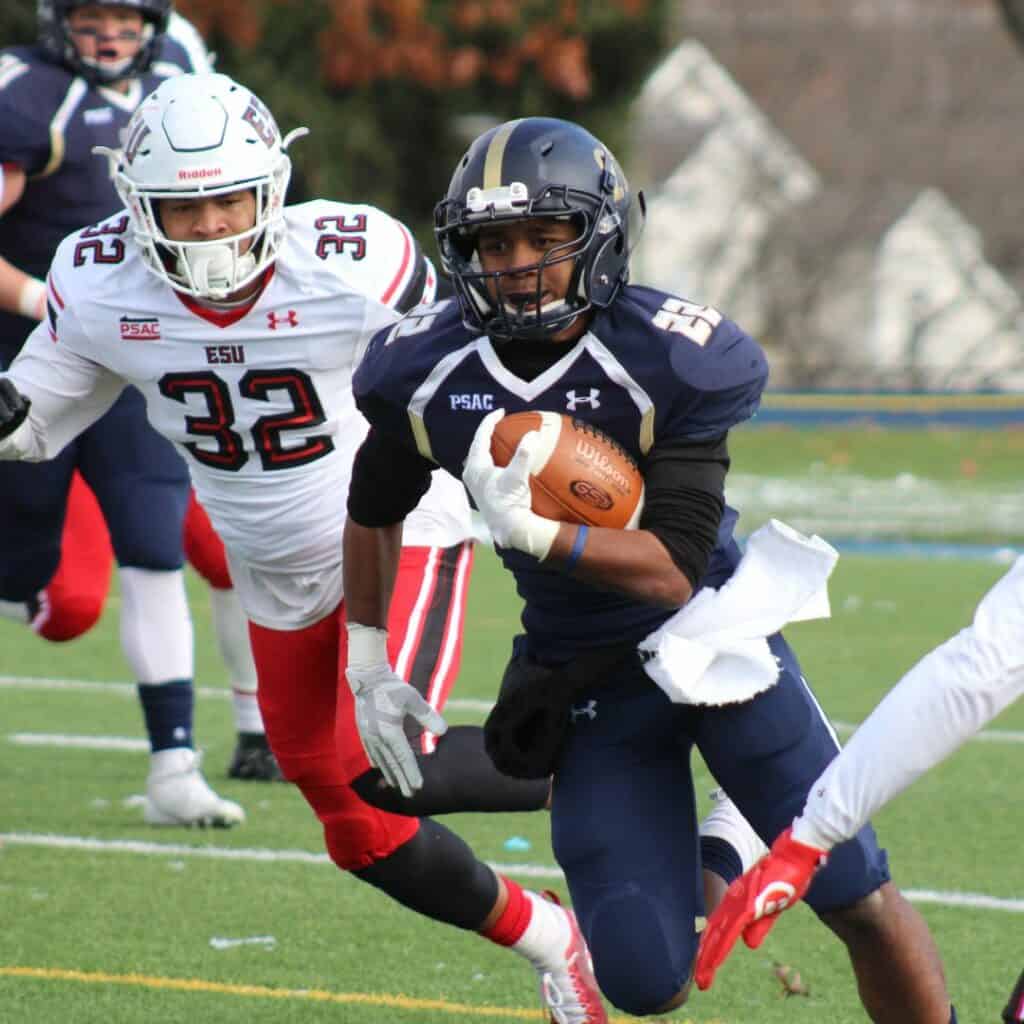
Running backs are responsible for carrying the ball and gaining yards on the ground. They must have good vision, agility, and the ability to break tackles.
They also need to be able to catch the ball out of the backfield and pass block.
There are different types of running backs, including power backs and scat backs, each with their own unique set of skills.
Receivers
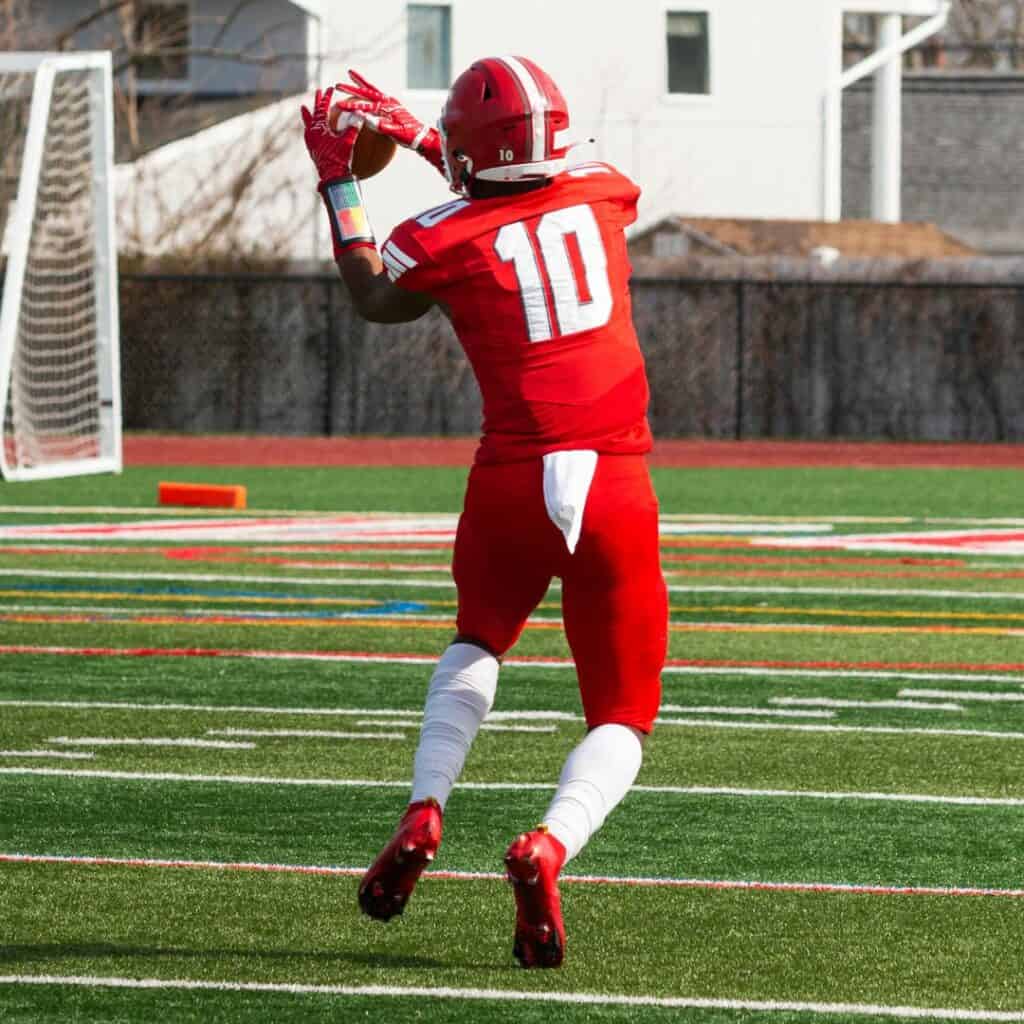
Wide receivers and tight ends are responsible for catching the ball and gaining yards through the air. They must have good hands, speed, and route-running ability.
Wide receivers are typically the deep threats, while tight ends are used for shorter passes and blocking.
Receivers also need to be able to read the defense and adjust their routes accordingly.
Offensive Line
The offensive line is responsible for protecting the quarterback and creating holes for the running backs. They are the protectors of the offense and must work together as a unit.
The offensive line includes the center, left tackle, right tackle, offensive guards, and sometimes a tight end or fullback.
Each position has its own unique set of responsibilities, but they must all work together to keep the quarterback safe and create running lanes.

| Position | Responsibilities |
|---|---|
| Center | Snaps the ball to the quarterback and blocks the defensive tackles |
| Left Tackle | Protects the quarterback’s blindside |
| Right Tackle | Blocks the defensive end on the opposite side of the left tackle |
| Offensive Guards | Block the defensive tackles and protect the quarterback from interior pressure |
| Tight End | Blocks on running plays and can catch passes |
| Fullback | Blocks for the running back and can catch passes |
Overall, the offensive positions are crucial to the success of any football team.
Each position requires specific skills and responsibilities, and they must all work together to move the ball down the field and score points.
Defensive Positions
In football, the defense is responsible for preventing the opposing team from scoring points. Defensive positions are crucial for a successful defense.
In this section, we will discuss the three main defensive positions: Linebackers, Defensive Line, and Defensive Backs.
Linebackers
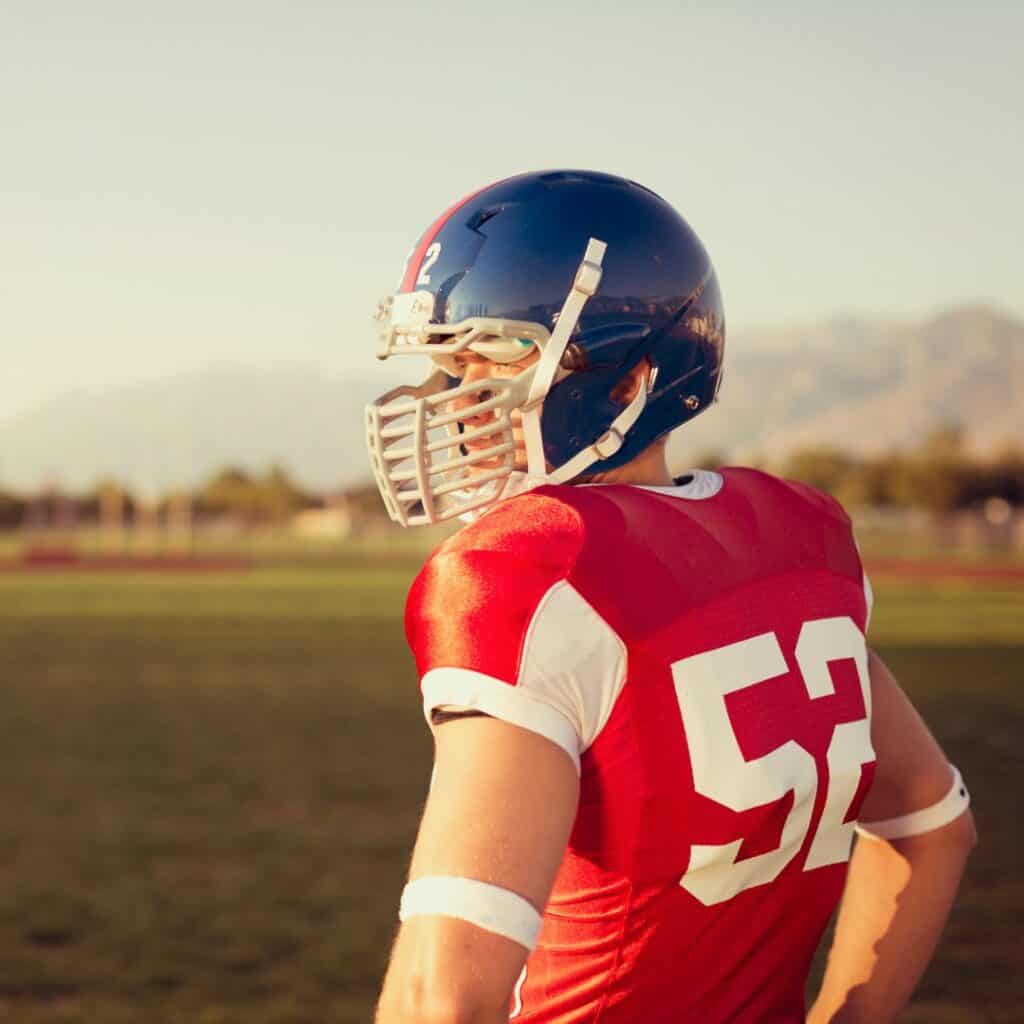
Linebackers are responsible for stopping the run, covering receivers, and rushing the quarterback. They are the heart of the defense and often call the plays.
The middle linebacker is the leader of the defense and is responsible for making sure everyone is in the right position.
The outside linebackers are responsible for setting the edge and preventing the running back from getting outside.
Defensive Line
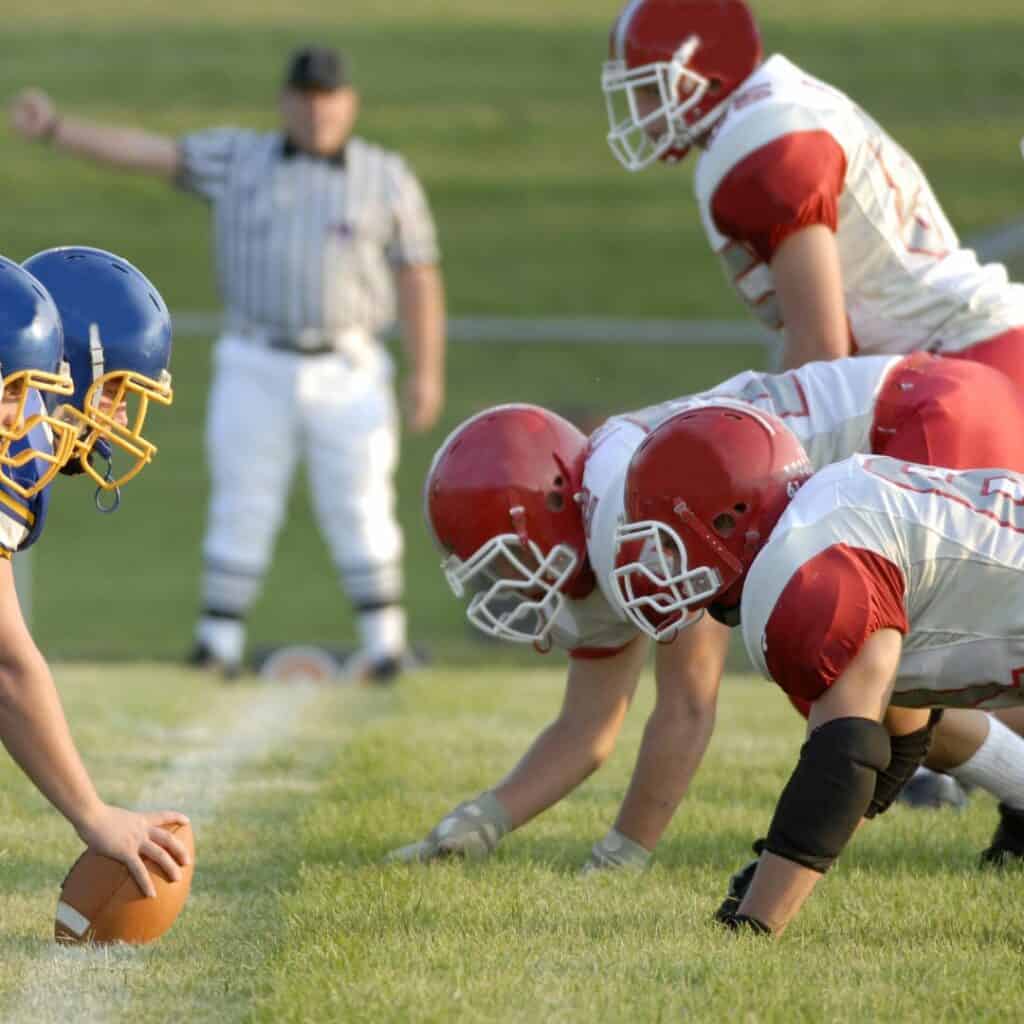
The defensive line is responsible for stopping the run and rushing the quarterback.
The defensive end contains the running back and rushes the quarterback.
The defensive tackle stops the run and pushes the offensive line back to disrupt the passing game.
The defensive line is the first line of defense and sets the tone for the entire defense.
Defensive Backs

Defensive backs are responsible for covering receivers and preventing the passing game.
The cornerback covers the wide receiver and prevents them from catching the ball.
The safety is responsible for covering the deep part of the field and preventing big plays. The free safety is responsible for playing the center field and preventing deep passes.
The strong safety is responsible for playing closer to the line of scrimmage and stopping the run.
| Position | Responsibilities |
|---|---|
| Middle Linebacker | Leader of the defense, stops the run, covers receivers, and rushes the quarterback |
| Outside Linebacker | Sets the edge, prevents the running back from getting outside, and rushes the quarterback |
| Defensive End | Contains the running back and rushes the quarterback |
| Defensive Tackle | Stops the run and disrupts the passing game |
| Cornerback | Covers the wide receiver and prevents them from catching the ball |
| Safety | Covers the deep part of the field and prevents big plays |
| Free Safety | Plays the center field and prevents deep passes |
| Strong Safety | Plays closer to the line of scrimmage and stops the run |
Each defensive position plays a crucial role in the success of the defense.
A well-rounded defense will have strong players in each position.
Special Teams
Special teams is a crucial aspect of football, and it can often make or break a game.
Special teams are responsible for kickoffs, punts, field goals, and extra points.
They also cover kickoffs and punts and return them. A good special teams unit can give a team excellent field position, while a poor unit can put a team in a hole.
Punter
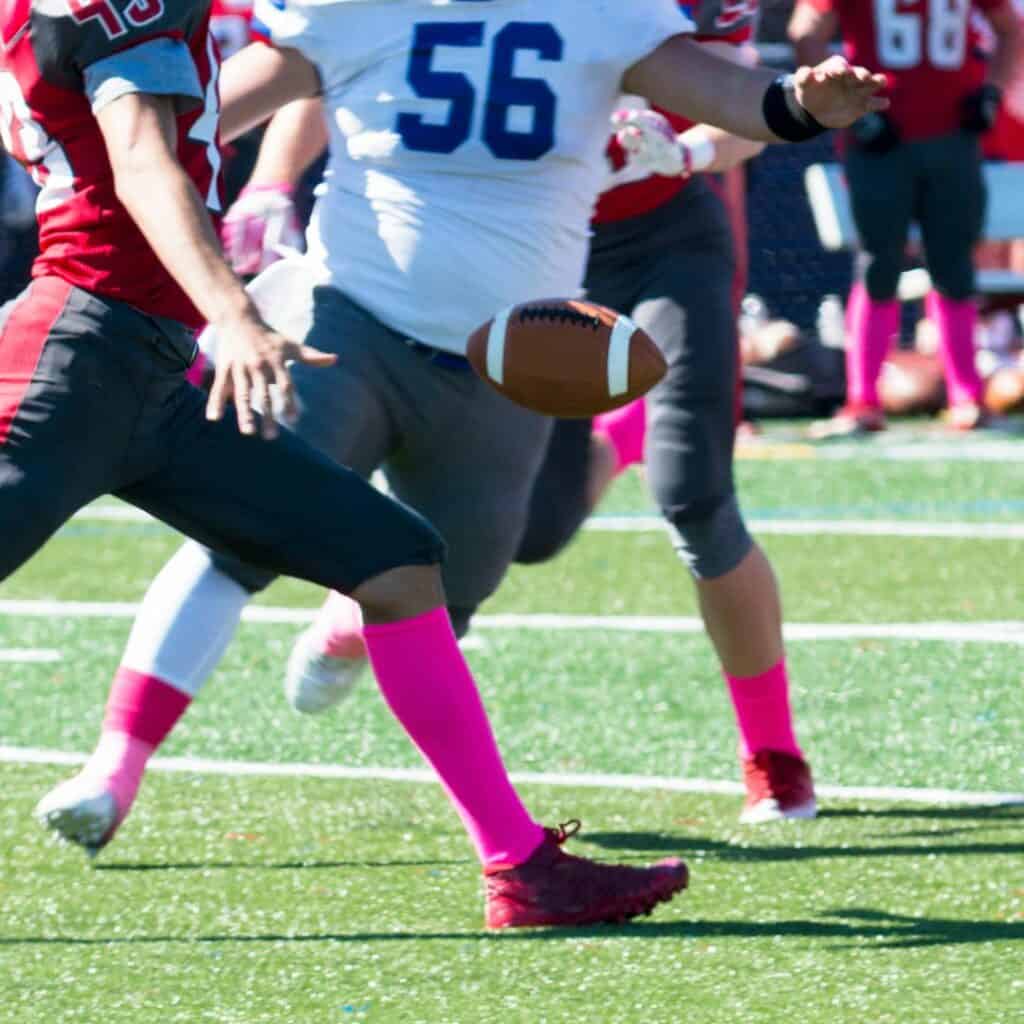
The punter is a critical position on special teams. The primary role of the punter is to kick the ball as far downfield as possible when the offense fails to convert on fourth down.
A good punter can pin the opposing offense deep in their own territory and help sway the momentum of the game.
They also have the responsibility of holding for field goals and extra points.
Kickers
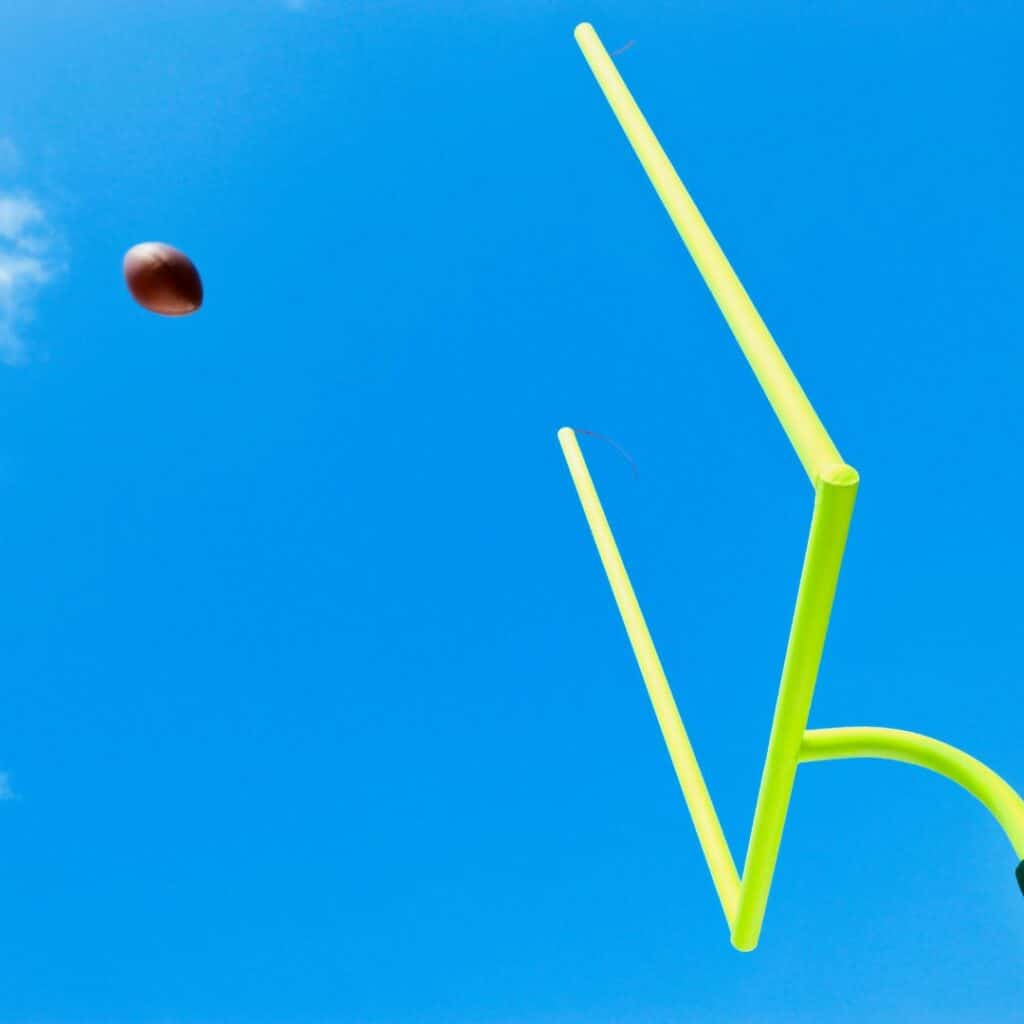
The kicker is arguably the most important special teams player and is usually the team’s leading scorer.
A reliable kicker who comes through in the clutch has won many an NFL game.
Kickers must have exceptional leg strength and accuracy to consistently convert field goals and extra points.
Returners
Returners are responsible for catching and returning kickoffs and punts as far as possible.
A good returner can give their team excellent field position, while a poor returner can put their team in a hole.
Returners need to have good vision, speed, and agility to evade tacklers and gain yards.
Gunners and Jammers
Gunner and jammer are two critical positions on special teams.
Gunners specialize in racing downfield to tackle the kick or punt returner, while jammers try to slow down the gunners and give the returner more time to catch the ball and make a play.
These positions require players with speed, strength, and good tackling ability.
| Position | Responsibilities |
|---|---|
| Punter | Kicks the ball as far downfield as possible when the offense fails to convert on fourth down. |
| Kicker | Converts field goals and extra points. |
| Returner | Catches kickoffs and punts and returns them as far as possible. |
| Gunner | Races downfield to tackle the kick or punt returner. |
| Jammer | Slows down the gunners and gives the returner more time to catch the ball and make a play. |
Overall, special teams is a critical aspect of football, and it’s essential for teams to have a good unit to be successful.
The positions mentioned above are just a few of the many important positions on special teams.
Understanding the Game
Football is a complex sport that involves a lot of strategy and teamwork.
To fully appreciate the game, it’s important to understand the basic rules and positions. In this section, we’ll cover the fundamentals of football and explain how each position contributes to the game.
The Basics
Football is played on a rectangular field that measures 100 yards long and 160 feet wide.
Each team has 11 players on the field at a time, and the objective is to score more points than the opposing team.
Points can be scored by carrying the ball into the end zone for a touchdown, kicking the ball through the uprights for a field goal, or tackling an opposing player in their own end zone for a safety.
The game is divided into four quarters, each lasting 15 minutes. There is a halftime break after the second quarter, and teams switch sides of the field after each quarter.
Offense and Defense
In football, there are two main units: offense and defense.
The offense is responsible for advancing the ball down the field, while the defense tries to stop them.
Each unit has its own set of positions, each with a specific role to play.
Offense
The quarterback is the leader of the offense and is responsible for calling plays, communicating with the other players, and throwing or handing off the ball to other players.
The offensive line blocks the defense and creates openings for the ball carrier.
The running backs and wide receivers are responsible for catching passes, running with the ball, and advancing it down the field.
Defense
The defense is responsible for stopping the offense from scoring.
The defensive line stops the run and puts pressure on the quarterback.
Linebackers are responsible for tackling the ball carrier and covering receivers.
The defensive backs are responsible for covering receivers and intercepting passes.
Learn More: Zone Defense in Football
Key Plays
Football involves a variety of plays, each with its own objective.
Some of the most common plays include:
- Passing plays: These plays involve the quarterback throwing the ball to a receiver down the field.
- Running plays: These plays involve the ball carrier running with the ball and trying to advance it down the field.
- Screens: These plays involve the quarterback throwing the ball to a receiver who is behind the line of scrimmage, with blockers ahead of them to create space.
- Audibles: These are changes to the play called by the quarterback at the line of scrimmage, based on what they see from the defense.
Communication and Strategy

Football is a highly strategic game that requires a lot of communication between players.
The offense will often huddle together to discuss plays and make adjustments, while the defense will try to read the offense’s signals and adjust their own strategy accordingly.
The quarterback is especially important in terms of communication and strategy.
They must be able to read the defense and make split-second decisions about where to throw the ball or whether to hand it off.
They must also be able to stay calm under pressure and avoid getting sacked by the defense.
Conclusion
Football is a complex and exciting sport that requires a lot of skill, strategy, and teamwork.
By understanding the basics of the game and the roles of each position, you can better appreciate the athleticism and strategy involved in each play.
Advanced Positions and Tactics
In American football, some positions require a higher level of skill and understanding of the game.
These advanced positions and tactics can make all the difference in a game.
Let’s take a closer look at some of these positions and tactics.
Captain
The captain is a player who is chosen to lead the team on and off the field. They are responsible for making sure the team is united and focused on winning.
The captain is also responsible for communicating with the referees and ensuring their teammates follow the rules.
Slot Receiver
The slot receiver is a pass-catching specialist who lines up between the offensive line and the split end.
They are usually smaller and quicker than the other receivers and are often used to create mismatches with the defense.
Protecting the Quarterback
Protecting the quarterback is a crucial part of the game.
The offensive line is responsible for keeping the quarterback safe from pass rushers and allowing them to make plays.
The quarterback is the playmaker, and if they are unable to make plays due to being sacked or pressured, the team’s chances of winning decrease significantly.
Pass Rusher
The pass rusher is a defensive player who specializes in getting to the quarterback.
They are responsible for disrupting the quarterback’s timing and forcing them to make mistakes.
Pass rushers can be defensive ends, outside linebackers, or even defensive tackles.
Shotgun Formation
The shotgun formation is a popular offensive formation that allows the quarterback to line up farther back from the line of scrimmage.
This formation gives the quarterback more time to read the defense and make decisions.
Lead Blocking
Lead blocking is when an offensive player clears a path for another player to run through.
This tactic is often used in running plays to create openings for the running back.
Split End and Flanker
The split end and flanker are both wide receivers who line up on opposite sides of the offensive line.
The split end lines up on the line of scrimmage, while the flanker lines up one step behind the line of scrimmage. These positions require speed, agility, and good hands.
Pulling Guard
The pulling guard is an offensive lineman who pulls out of their position to lead block for a running back.
This tactic is often used to create openings in the defense and allow the running back to gain more yards.
These advanced positions and tactics require a high level of skill and understanding of the game. They can make all the difference in a game and are essential for any football team to succeed.
Frequently Asked Questions
What Is The Second Most Important Position In Football?
According to experts, the left tackle is considered the second most important position in football. The left tackle is responsible for protecting the quarterback’s blindside, which is crucial for the success of the offense. Without a reliable left tackle, the quarterback is at risk of being sacked, which can lead to turnovers, injuries, and other negative outcomes.
What Is The Least Important Position In Football?
While every position in football is important, some are considered less important than others. For instance, fullbacks and kickers are often considered less important than other positions. Fullbacks are primarily used for blocking and rarely get the ball, while kickers only come into play during special teams situations.
Best Football Position For A Beginner
For beginners, the best football position often matches their physical attributes and skill level. Some of the easiest positions to learn include wide receiver, running back, and defensive back. These positions require speed, agility, and good hand-eye coordination.
What Is The Most Important Defensive Player In Football?
The most important defensive player in football is often the middle linebacker. The middle linebacker is responsible for calling plays, reading the offense, and making tackles. They are often considered the quarterback of the defense and play a crucial role in stopping the opposing team’s offense.
What are the premium positions in the NFL?
Premium positions in the NFL are those that are in high demand and require specialized skills and attributes. These positions include quarterback, left tackle, pass rusher, and cornerback. Teams often invest a lot of money and resources into these positions, as they can have a significant impact on the team’s success.
| Position | Description |
|---|---|
| Quarterback | The leader of the offense, responsible for throwing passes and making plays |
| Left tackle | Protects the quarterback’s blindside and helps create running lanes |
| Pass rusher | Rushes the quarterback and disrupts the opposing team’s offense |
| Cornerback | Covers the opposing team’s wide receivers and prevents them from catching passes |
